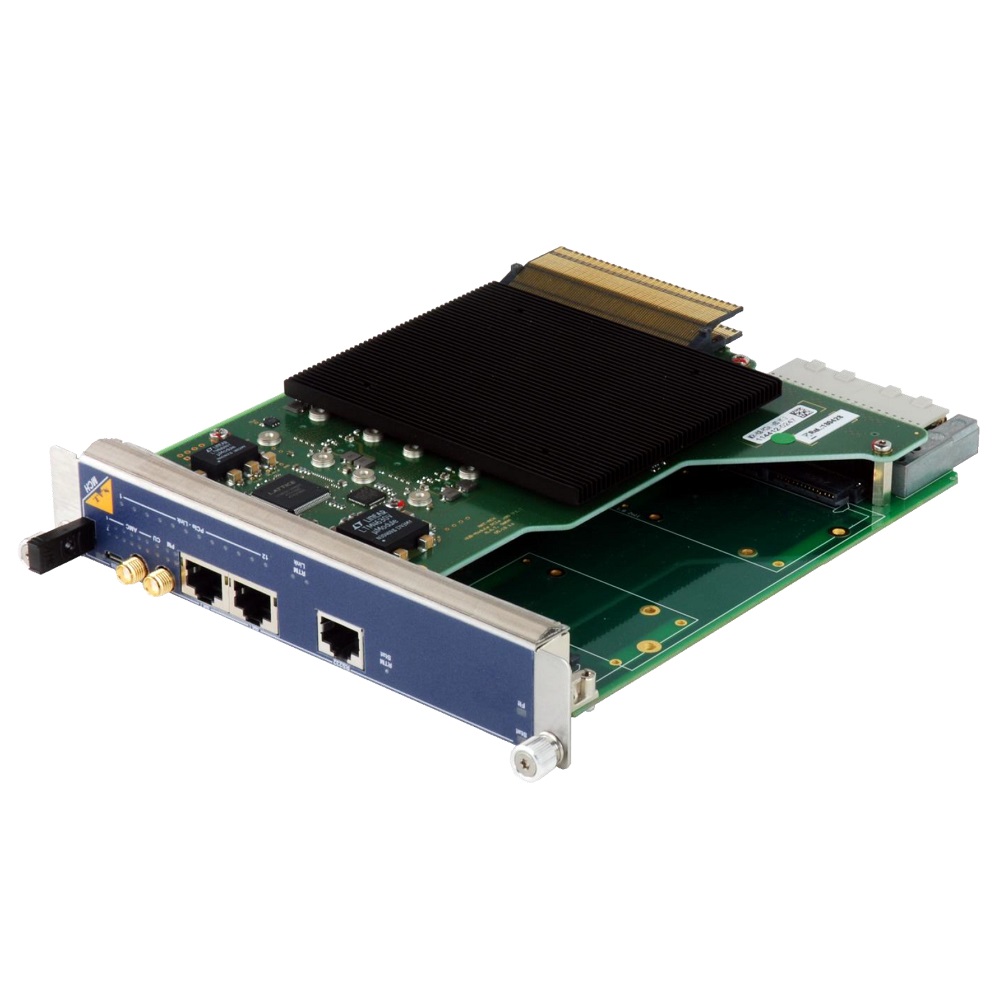Technical Description

- MicroTCA Carrier Hub, MTCA.0, MTCA.1, MTCA.4 and MicroTCA.4.1 compliant
- 200MHz NXP Freescale ColdFire MCF54452 CPU with up to 64MB DDR2 RAM and up to 64 MB Flash
- Management for 12 AMC modules and optional AMC13 in 2nd MCH slot, 2 front and 2 rear cooling units and 1-4 power units incl. N+1 redundancy
- Management of 4 eRTMs and 2 rear power modules via LLRF backplane
- Supports redundant architectures and fail-over procedure
- Supports configurable emergency shutdown of AMCs or entire system
- Support for MCH rear transition module (NAT-MCH-RTM)
- Fabric A: Gigabit Ethernet
- 12 AMCs + opt. AMC13 in 2nd MCH slot
- Fabric D-G: PCI Express Gen 3
- x1 or x4 to 12 AMCs
- One x16 or two x8 to optical uplink (optional)
- x16 to RTM or to one AMC slot (requires backplane support)
- Clock generation and distribution by special clock module for Physics (NAT-MCH-CLK-PHYS)
- CLK1 and CLK2 by special low jitter and low latency circuitry
- CLK3 fixed mean 100MHz PCIe clock (HCSL)
- Two GbE front panel ports for management and uplink
- One serial (RS-232) and one USB console front panel port
- Fabric D-G uplink (two x8 or one x16) front panel port
- 2 SMA front panel ports for external CLK support
- Support NATview
- 34 status LEDs, 3 standard AMC LEDs, 12 LEDs for AMC slots, 2 cooling unit LEDs, 4 LEDs for power units and 13 LEDS for PCIe link status
- 2 years warranty
Order Information
NAT-MCH-PHYS80
NAT-MCH, 16 GbE, PCIe x4, special Physics Clock module, double full-size
NAT-MCH-PHYS80-UPLNK
NAT-MCH, 16 GbE, PCIe x4, special Physics Clock module, optical uplinks for PCIe (two x8 or one x16), double full-size
NAT-MCH-RTM-UPLNK
RTM, double full size with one copper uplink (x16) for PCIe
NAT-MCH-RTM
RTM, double full size and COM Express carrier
NAT-MCH-RTM-BM
RTM, double full size and COM Express carrier, backplane management and zone 2 connector for µRTM backplanes eg LLRF backplane
NAT-MCH-RTM-BM-FPGA
As NAT-MCH-RTM-BM plus ZYNQ-FPGA to implement separate bus eg SPI on LLRF backplane to access eRTMs
NAT-MCH-COMex-E3
COM Express Module Type 6 with Quad Core 2.0 GHz Xeon E3-1505LV5, 16GB RAM
NATView EASY
Java based GUI for monitoring and supervising of MTCA systems
NATView PRO
Java based GUI for monitoring and supervising of MTCA systems with SEL saver, FRU editor, e-keying viewer, link display





